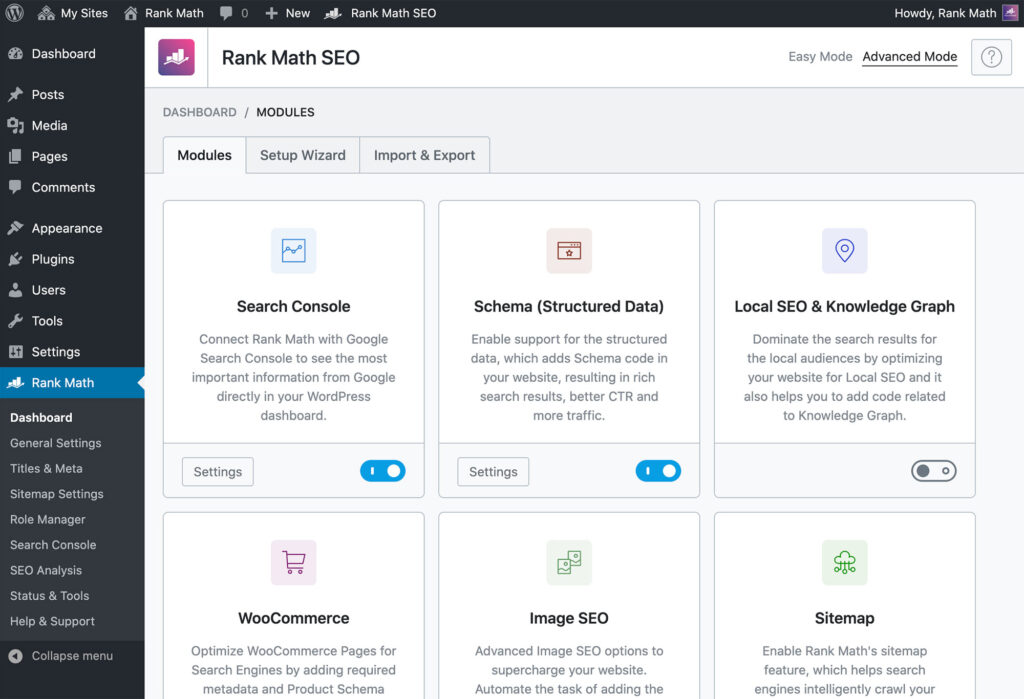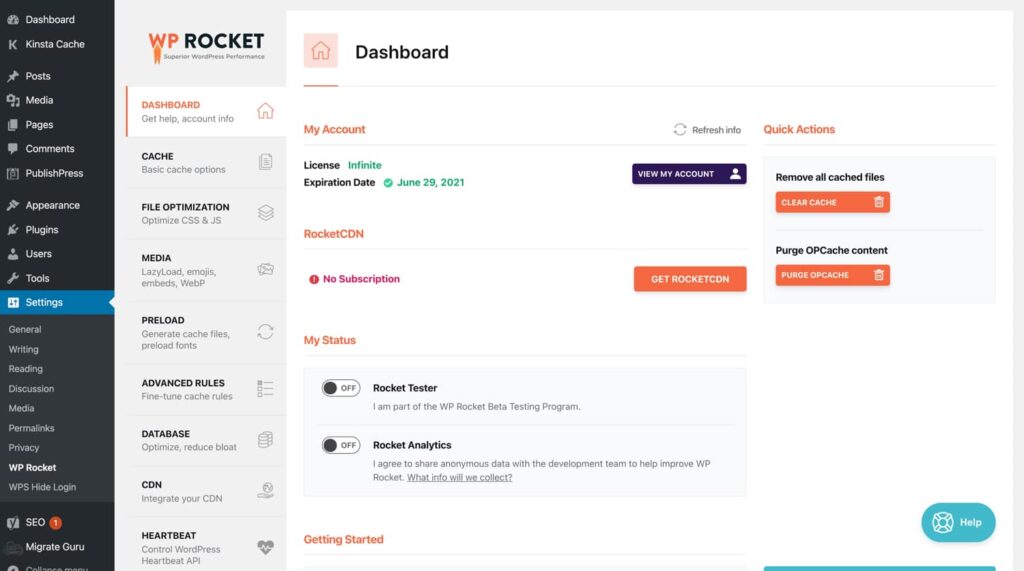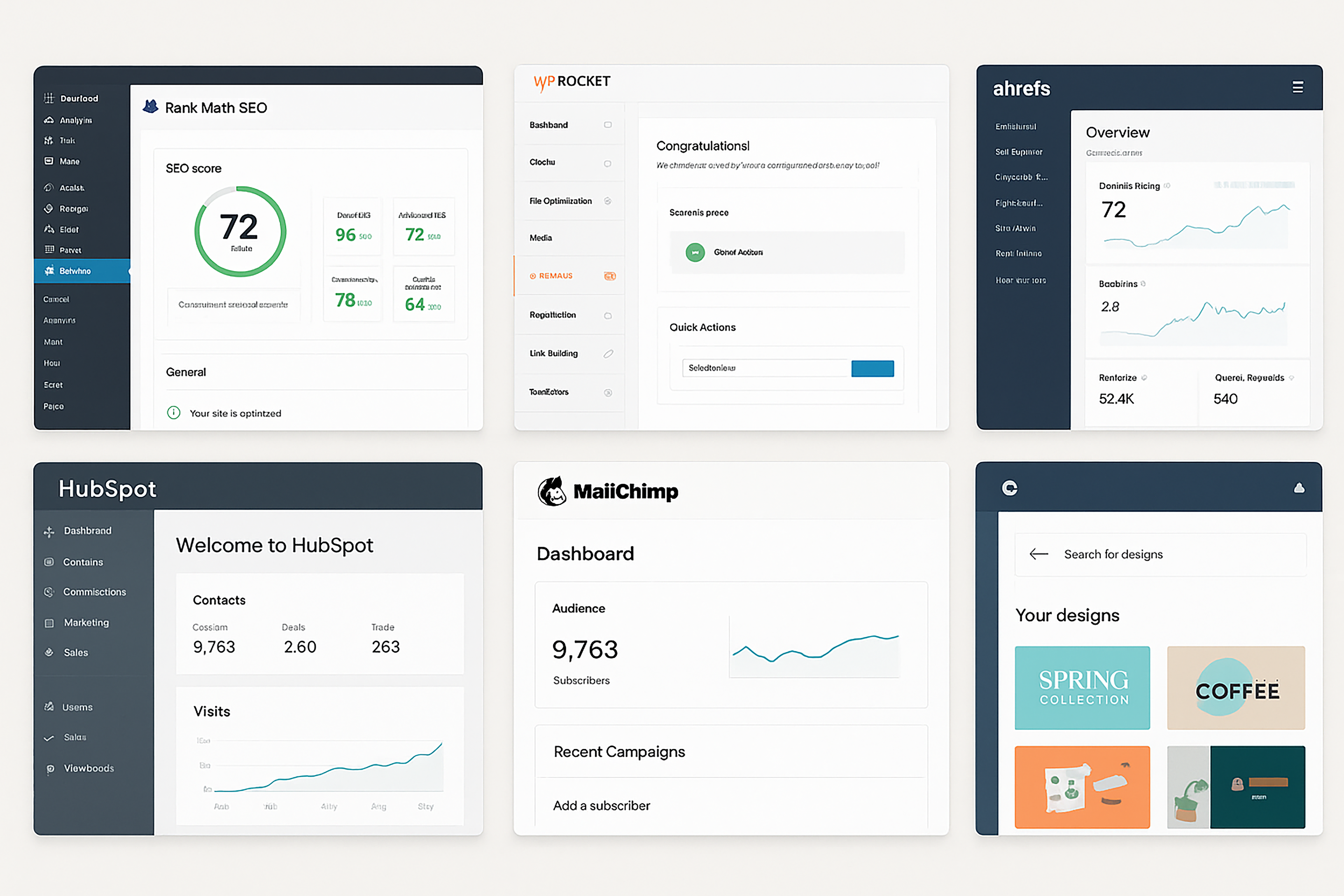Key Takeaways
AI Search Optimization refers to the use of artificial intelligence technologies to enhance website visibility and ranking in search engine results. It involves leveraging algorithms and machine learning to analyze user behavior, optimize content, improve user experience, and adapt to search engine algorithms, ultimately driving organic traffic and improving SEO performance.
An answer-first structure is putting a crisp, one-sentence direct answer (20 to 40 words) immediately after each H2/H3 so LLMs can extract it easily.
Schema provides structured, machine-readable definitions of entities and their relationships, which helps LLMs and other AI systems distinguish concepts and interpret connections more accurately.
LLMs love explicit numbers, exact dates, table of data, and full source names. Entity-rich facts are easiest for LLMs to reference.
Other notable Takeaways
- Quote & highlight blocks: Short 20–40 word highlights increase chance of verbatim citations.
- Technical hygiene: Fast load, canonical URLs, stable slugs and accessible HTML (H1..H6, IDs) are required for reliable LLM scraping.
Table of Contents
What is AI Search Optimization?
AI Search Optimization (LLM SEO /GEO / AEO) is structuring and marking up your content so large language models can find, understand, and cite it when generating conversational answers.
Unlike traditional SEO, which optimizes for ranking pages in a list of results, AI Search Optimization (also called Answer Engine Optimization, Generative Engine Optimization or GEO/AEO) optimizes for being extracted and cited by generative models and AI-driven search features — i.e., to appear inside an AI answer, overview, or assistant response.
Why LLMs Change the SEO Game?
- User behavior is shifting: A 2025 study reported that over 34% of Gen Z use AI chatbots for search.
- Zero-click answers are accelerating: AI Overviews now appear in around 47% of desktop searches, up 102% within two months
Why this matters:
| Insight | Explanation |
|---|---|
| AI-driven search isn’t dominant yet—but it’s growing | Chatbot traffic is small but climbing rapidly. Younger users increasingly rely on AI for discovery. |
| AI favors concise, structured answers | Generative systems extract answers, not page ranks. Content must be answer-first and metadata-rich to get cited. |
| Conversion dynamics are shifting | AI referrals (via Overviews and chat responses) engage users more deeply, even without clickthroughs. |
| Market is adapting quickly | Venture-backed tools and platforms for AEO/GEO signal industry validation and urgency. |
LLM On-Page Checklist
LLM on-page SEO focuses on structuring, marking up, and formatting content so that large language models can reliably extract, summarize, and cite it, rather than just ranking it in traditional SERPs.
Here’s the checklist:

- Answer-First Formatting: Featured snippets and AI Overviews favor this.
- Begin each H2/H3 with a 1-sentence direct answer before elaborating
- Add Structured Data / Schema
- Use Article, FAQPage, and HowTo schema where applicable.
- Add FAQ schema under Q&A blocks to explicitly signal “question-answer” pairs.
- Add a Key Takeaway Section at the top of the page
- Place a short summary bloc1k at the top in bullet points or Q&A format.
How to Do Keyword Research in the AI Search Era?
Even when searchers become more sophisticated with their search query, AI search platforms like ChatGPT, Perplexity, Claude, and others, search for multiple SEO optimized keywords on traditional search engines like Google, Bing, Yandex, etc, in the background.
For example, a sophisticated search query could be “Can you tell me if there are any kids facial wash that are chemical-free, made with natural and organic ingredients, and under $15”.
AI search platforms would probably search the following keywords on traditional search engines to get their answer:
- Chemical-free facial wash for kids
- Cheap organic facial wash
- Organic kids facial wash
- etc
These traditional keywords can be broken down into layered search intents, such as:
- Chemical-free
- Organic and Natural
- Cheap
So, the first step to doing keyword research in the AI search era is to know who you are targeting. Understand and predict what your customers will likely search for, and what are their layered search intents.
Why Focus on Other Multimedia Formats for AI Search Optimization?
AI search platforms like ChatGPT or Perplexity, do not only pull text for their answers, they increasingly pulls answers from images, videos, audios and other multimedia formats, so creating content in other multimedia formats give you more chances to be cited and surfaced.
Here are some originally researched statistics that shows why you should focus more on creating videos, images, and audio to optimize for AI Search:
| Google Overview do not often cite from content ranking on the first page | Only 1 – 3 top ranked articles are cited in the top 10 of AI Overview, the rest are from pages ranking on other related queries or from pages 2, 3, 4, etc. |
| Google Overview often cite content from low domain authority sites. | 69% of cited sources were from sites with domain rating of below 40 |
| Google Overview often cite sources from the same website | 72% of cited sources are from the same website but targets different keywords |
| YouTube videos are often cited in Google Overviews | 65% of AI overviews cited a YouTube video in the top 10 cited sources |
| Reddit Threads are often cited by Google Overviews | 15% of AI overviews cited a reddit thread in the top 10 cited sources |
| Google Overview often cite Quora Answers | 15% of AI overviews cited a Quora Answer in the top 10 cited sources |
Why You Should Create llms.txt for AI Search Optimization?
A llms.txt is a text file includes the anchor text, links, and description of the most important pages of your site.
A typical markdown list item in the llms.txt looks like this:
- [AI Search Optimization Guide](https://example.com/guides/ai-search-optimization): An important guide fir AI Search optimization
This can be broken down into 3 parts:
- [AI Search Optimization Guide] – This is the anchor text for the link. It is typically the SEO Meta Title of the page
- (https://example.com/guides/ai-search-optimization) – This is the actual hypertext link to the page of your site
- An important guide fir AI Search optimization – This is the description or the Meta description of the page
Adding a list of markdown page links and description tells LLMs that the links in the llms.txt are the most important pages of your site.
Is it really important since there are reports saying that LLMs do not crawl the llms.txt file?
llms.txt file is a proposed standard, and although it is not fully adopted yet, and may seem like LLM crawlers are not crawling the file, hundreds and thousands of businesses and AI models are quietly adopting the standard.
Even Zapier, Stripe, Cloudflare, CoinBase and others are already implementing llms.txt on their site. Why shouldn’t you?
Plus, there is no harm to your site, so we do not see a reason not to implement the llms.txt file.
AI search platforms like ChatGPT or Perplexity, do not only pull text for their answers, they increasingly pulls answers from images, videos, audios and other multimedia formats, so creating content in other multimedia formats give you more chances to be cited and surfaced.
Here are some originally researched statistics that shows why you should focus more on creating videos, images, and audio to optimize for AI Search:
AI search platforms like ChatGPT or Perplexity, do not only pull text for their answers, they increasingly pulls answers from images, videos, audios and other multimedia formats, so creating content in other multimedia formats give you more chances to be cited and surfaced.
Here are some originally researched statistics that shows why you should focus more on creating videos, images, and audio to optimize for AI Search:
AI search platforms like ChatGPT or Perplexity, do not only pull text for their answers, they increasingly pulls answers from images, videos, audios and other multimedia formats, so creating content in other multimedia formats give you more chances to be cited and surfaced.
Here are some originally researched statistics that shows why you should focus more on creating videos, images, and audio to optimize for AI Search:
AI search platforms like ChatGPT or Perplexity, do not only pull text for their answers, they increasingly pulls answers from images, videos, audios and other multimedia formats, so creating content in other multimedia formats give you more chances to be cited and surfaced.
Here are some originally researched statistics that shows why you should focus more on creating videos, images, and audio to optimize for AI Search:
AI search platforms like ChatGPT or Perplexity, do not only pull text for their answers, they increasingly pulls answers from images, videos, audios and other multimedia formats, so creating content in other multimedia formats give you more chances to be cited and surfaced.
Here are some originally researched statistics that shows why you should focus more on creating videos, images, and audio to optimize for AI Search:
AI search platforms like ChatGPT or Perplexity, do not only pull text for their answers, they increasingly pulls answers from images, videos, audios and other multimedia formats, so creating content in other multimedia formats give you more chances to be cited and surfaced.
Here are some originally researched statistics that shows why you should focus more on creating videos, images, and audio to optimize for AI Search:
AI search platforms like ChatGPT or Perplexity, do not only pull text for their answers, they increasingly pulls answers from images, videos, audios and other multimedia formats, so creating content in other multimedia formats give you more chances to be cited and surfaced.
Here are some originally researched statistics that shows why you should focus more on creating videos, images, and audio to optimize for AI Search:
AI search platforms like ChatGPT or Perplexity, do not only pull text for their answers, they increasingly pulls answers from images, videos, audios and other multimedia formats, so creating content in other multimedia formats give you more chances to be cited and surfaced.
Here are some originally researched statistics that shows why you should focus more on creating videos, images, and audio to optimize for AI Search:
AI search platforms like ChatGPT or Perplexity, do not only pull text for their answers, they increasingly pulls answers from images, videos, audios and other multimedia formats, so creating content in other multimedia formats give you more chances to be cited and surfaced.
Here are some originally researched statistics that shows why you should focus more on creating videos, images, and audio to optimize for AI Search:
AI search platforms like ChatGPT or Perplexity, do not only pull text for their answers, they increasingly pulls answers from images, videos, audios and other multimedia formats, so creating content in other multimedia formats give you more chances to be cited and surfaced.
Here are some originally researched statistics that shows why you should focus more on creating videos, images, and audio to optimize for AI Search:
AI search platforms like ChatGPT or Perplexity, do not only pull text for their answers, they increasingly pulls answers from images, videos, audios and other multimedia formats, so creating content in other multimedia formats give you more chances to be cited and surfaced.
Here are some originally researched statistics that shows why you should focus more on creating videos, images, and audio to optimize for AI Search:
AI search platforms like ChatGPT or Perplexity, do not only pull text for their answers, they increasingly pulls answers from images, videos, audios and other multimedia formats, so creating content in other multimedia formats give you more chances to be cited and surfaced.
Here are some originally researched statistics that shows why you should focus more on creating videos, images, and audio to optimize for AI Search:
AI search platforms like ChatGPT or Perplexity, do not only pull text for their answers, they increasingly pulls answers from images, videos, audios and other multimedia formats, so creating content in other multimedia formats give you more chances to be cited and surfaced.
Here are some originally researched statistics that shows why you should focus more on creating videos, images, and audio to optimize for AI Search:
AI search platforms like ChatGPT or Perplexity, do not only pull text for their answers, they increasingly pulls answers from images, videos, audios and other multimedia formats, so creating content in other multimedia formats give you more chances to be cited and surfaced.
Here are some originally researched statistics that shows why you should focus more on creating videos, images, and audio to optimize for AI Search:
AI search platforms like ChatGPT or Perplexity, do not only pull text for their answers, they increasingly pulls answers from images, videos, audios and other multimedia formats, so creating content in other multimedia formats give you more chances to be cited and surfaced.
Here are some originally researched statistics that shows why you should focus more on creating videos, images, and audio to optimize for AI Search:
AI search platforms like ChatGPT or Perplexity, do not only pull text for their answers, they increasingly pulls answers from images, videos, audios and other multimedia formats, so creating content in other multimedia formats give you more chances to be cited and surfaced.
Here are some originally researched statistics that shows why you should focus more on creating videos, images, and audio to optimize for AI Search:
ChatGPT
ChatGPT SEO
AI search platforms like ChatGPT or Perplexity, do not only pull text for their answers, they increasingly pulls answers from images, videos, audios and other multimedia formats, so creating content in other multimedia formats give you more chances to be cited and surfaced.
Perplexity
Perplexity SEO
Here are some originally researched statistics that shows why you should focus more on creating videos, images, and audio to optimize for AI Search:
rank in ai search
shaping the future

future of search engine optimization

AI Search Platforms

AI search platforms like ChatGPT or Perplexity, do not only pull text for their answers, they increasingly pulls answers from images, videos, audios and other multimedia formats, so creating content in other multimedia formats give you more chances to be cited and surfaced.

Here are some originally researched statistics that shows why you should focus more on creating

videos, images, and audio to optimize for AI Search:

AI search platforms like ChatGPT or Perplexity, do not only pull text for their answers, they increasingly pulls answers from images, videos, audios and other multimedia formats, so creating content in other multimedia formats give you more chances to be cited and surfaced.
Staistics
Here are some originally researched statistics that shows why you should focus more on creating videos, images, and audio to optimize for AI Search:
Multimedia Formats
Best AI Platforms
Perplexity vs ChatGPT
AI Search Platforms
AI search platforms like ChatGPT or Perplexity, do not only pull text for their answers, they increasingly pulls answers from images, videos, audios and other multimedia formats, so creating content in other multimedia formats give you more chances to be cited and surfaced.
Test
Here are some originally researched statistics that shows why you should focus more on creating videos, images, and audio to optimize for AI Search: